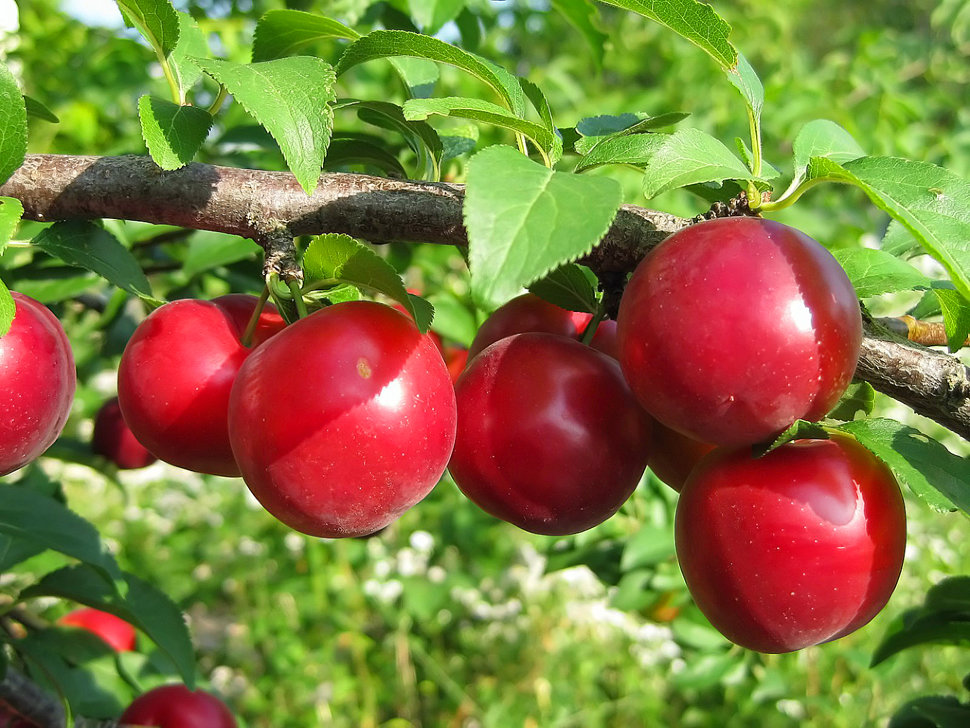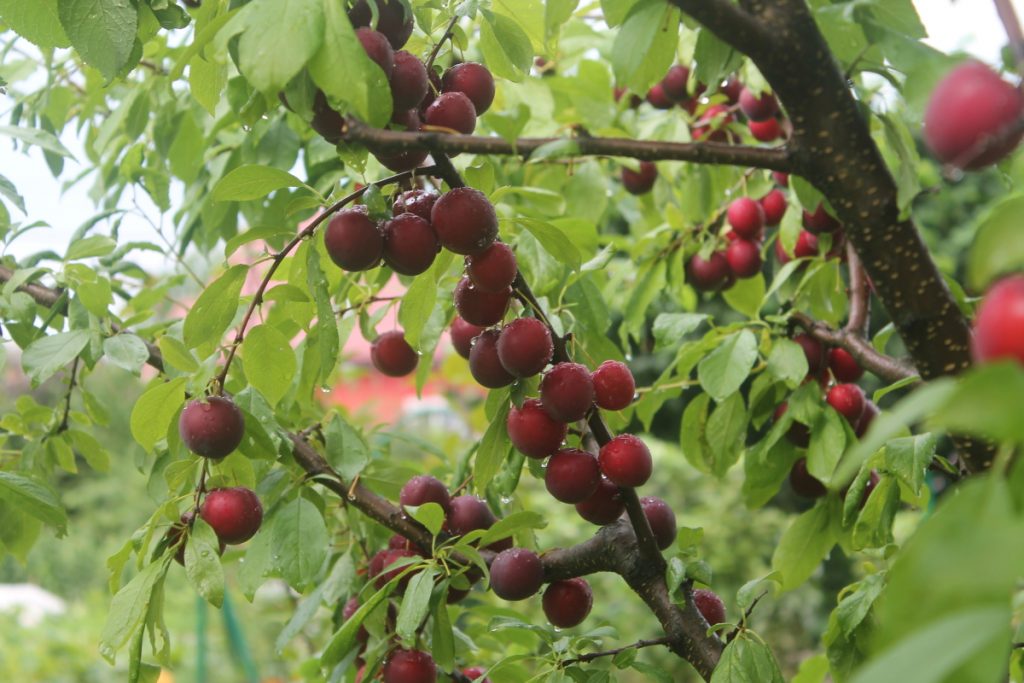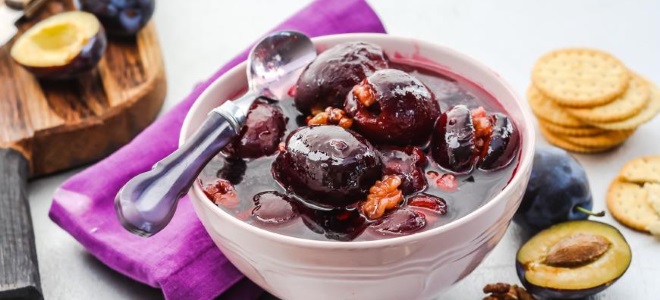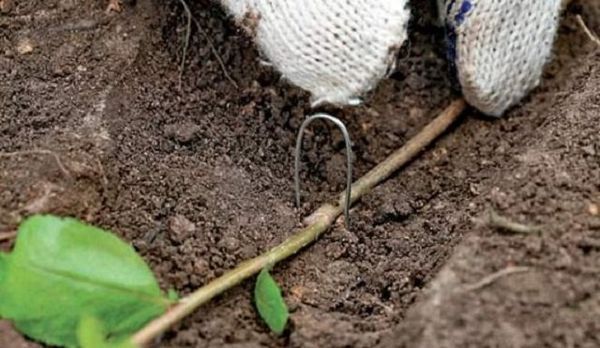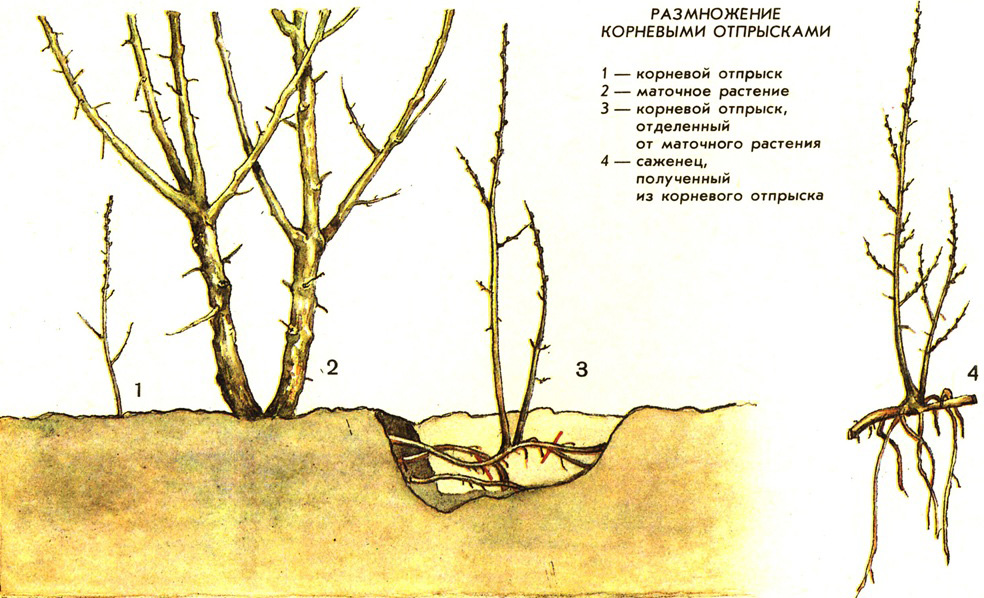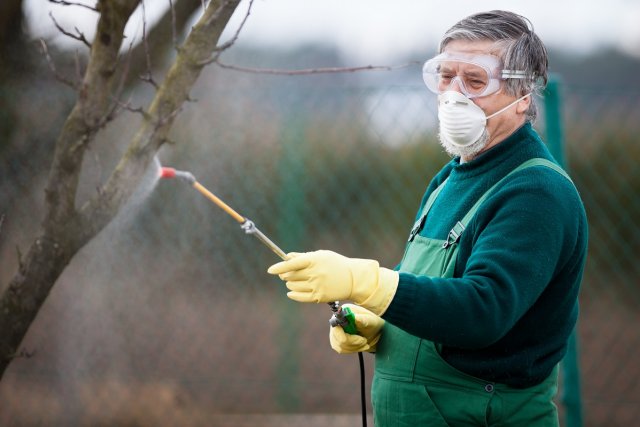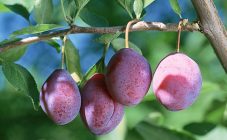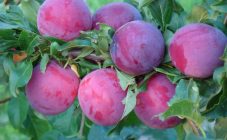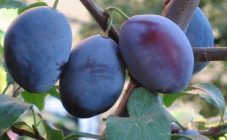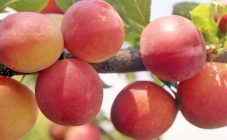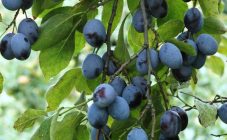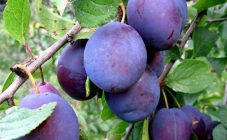Content:
Plum Skorospelka red - one of the oldest representatives of the Plum family, the variety group "Real Hungarian". Possessing an average taste, this variety can easily find a "home" in any garden area.
History
The variety of plum Skorospelya was bred in the Botanical Garden of Regel and Kesselring in 1926 in China, it became officially known in Russia only in 1947, having entered the State Botanical Register. The progenitor is the common Hungarian berry, whose homeland is the Smolensk Territory.
Characteristic
Fetus
The fruit has an oval shape with a slightly pointed and curved top with dimensions: 3.5 cm in length, 3 cm in width and 2.8 cm in thickness. It has a two-tone skin: reddish-pink and raspberry-purple shades. The weight of a large specimen is 20 grams, of an average one - 15 grams.
The pulp has a yellowish tint and medium density. The fruit has a sweet and sour taste with a light aroma: according to the taster's scale, it gains 8.5% sugar content.
Plum also possesses the above qualities.The cooperative description of the variety is indicated in the text, however, unlike the described representative, it has high taste: the fruit is juicy, purple in color, with a well-separated stone and weighing up to 35 grams, and excellent frost resistance - easily tolerates any frosts.
Sheet
The light green deciduous mass of the early ripening red plum has the shape of a pointed egg with a wedge-shaped base and small size: 7-9 cm in length and 4-5 cm in width. The surface is glossy, smooth. Zigzag edges. The sheet is lowered down.
Trunk
The tree is considered to be of medium height, reaching a height of up to 3.5 meters. The crown of the plant has a spherical shape, the size corresponds to the height of the trunk. The color of the bark ranges from light gray to light brown. The surface is rough.
Branches and shoots
The branches in the crown are located at an angle of 50 degrees. Shoots or stepchildren rise upward and grow up to 40 cm. Weakly developed buds are loosely pressed to the branches, their number is usually 3 m.
Flower
The flowers are medium open, have wide and oval petals. The base of the flower is goblet, measuring up to 22 mm.
Pollination is partly own, partly with the help of other varieties.
Application
Plum fruits are mostly used fresh, but they can also be preserved by making preserves, compotes, jams, and frozen.
Also fresh fruits of Plum Brick are used, the description of the variety is discussed in the text. The specified variety has fruits of red color and sweet and sour taste with a maximum weight of 17 grams. The described fruits can be obtained only three years after planting.
In addition to the use of fruits, cuttings are also used. They are used as the progenitor of such varieties as Plum Record, Plum Lyudmila, Iskra.
Landing
Plant preparation
Site preparation
When choosing a new "house" for a tree, you must:
- pay special attention to the sunny side of the site, which will warm well and not be exposed to drafts;
- dig a hole, 15 cm deep, and insulate it by putting horse manure, humus, sand, superphosphate on the bottom.
Disembarkation
It is recommended to dive a seedling in the spring, if it was grafted, and in the first weeks of autumn, if it was grown in a container version.
During landing, you must:
- transport a young tree to open ground with the ground in which it was located;
- in the process of placing the Skorospelka plum in a new "house", it is necessary to leave up to 7 cm of the root collar above the ground;
- sprinkle with earth and water abundantly;
- insulate with straw and dry grass;
- after the appearance of the first leaves, feed with urea and 40 g of potassium sulfate;
- after the first flowers appear, most of them must be removed so that the tree better adapts to new conditions.
In case of planting plums in "poor" soil, it is necessary to apply fertilizer every year.
Reproduction
To obtain more than one tree or a new variety, you can resort to the following types of propagation.
By grafting or cuttings
For reproduction by the specified species, you need:
- cut off in the spring a shoot growing a meter from the root from a tree;
- wait for warm weather, warm earth and dig a hole for a plum bush;
- put a mixture of peat and sand at the bottom of the hole in a ratio of 1 to 1;
- dive a seedling into a new house at an angle;
- sprinkle with earth, water abundantly and insulate with grass and straw;
- after two weeks, add top dressing.
Layers
This species is divided into two types: terrestrial and aerial.
It is desirable to carry out this type of reproduction in the spring. The earth should be warm and pliable.
For reproduction in the first option, it is recommended:
- dig a hole, 15 cm deep, 10 cm wide;
- choose a healthy stepson and treat him with a growth stimulant;
- put the treated shoot in the pit without tearing it off the mother trunk;
- sprinkle the landing site with earth and trample it;
- water periodically abundantly, keeping the soil moist until new leaves appear;
Using the second method, it is desirable:
- make an incision, 200 mm long, on the annual shoot;
- put moss wrapped in a bag in the wound site;
- wait for the first leaves to appear and transport the young sprout to a new place of permanent residence.
Root shoots
For reproduction, the following manipulations should be done:
- to separate the shoots from the maternal root; in the process of splitting off, it is advisable not to damage the root;
- disinfect the cut site with a special solution for garden trees in order to avoid contamination with pathogenic bacteria;
- choose a sunny plot of land with no possible sharp gusts of wind;
- prepare a place for a new seedling by removing debris and weeds, watering and loosening the soil.
- dig a hole, about 50 cm deep and wide;
- make the hole warm and protected from mice and water, putting ash, humus on the bottom for insulation and protection from mice; sand, broken brick for protection from water;
- before transportation, it is recommended to remove the top in order to accelerate the appearance of new foliage;
- dive a new tree, trying not to damage the lateral processes of the root system, preferably in autumn or spring, before buds appear;
- water and insulate abundantly, putting dry grass or straw around the plum tree;
- 14 days after planting, feed with fertilizers: nitrate to accelerate growth and fertility, minerals, for example, Azofos, a mixture of manure and water.
Features:
- In the case of plant propagation with the help of roots, it is necessary that they be native, and not obtained during the grafting process.
- To prepare a disinfectant, you must mix: alcohol, vegetable oil, beeswax, resin, grease and ash from the vine. Once the mixture is prepared, apply in warm weather and cover with gauze or other cloth to distract the attention of the striped insects.
- When transplanting, it is recommended to take the seedling from the ground in which it was originally, so that the plant is easier to adapt.
- In the case of feeding with mineral and organic fertilizers, it is advisable to alternate them: year - organic, year - minerals.
- When applying Azofoska as a fertilizer, it is not recommended to exceed the dosage indicated on the package in order to avoid the accumulation of the substance in the fruits and, as a result, poisoning.
- It is advisable to feed plants with minerals only in a warm period of time: early September - late May.
Care
To make the plum tree happy with a quality harvest, you should:
- loosen the ground after each watering;
- feed every year;
- water abundantly in the first months of summer;
- watering twice a day, once a week;
- clean the round area around the seedling from debris;
- remove fruits that are lagging behind in development.
Disease prevention
To reduce the risk of contamination of the tree with pathogenic bacteria, it is desirable:
- warm up the seedlings before planting at a temperature of 46 degrees for 15 minutes;
- remove diseased plants by burning them;
- irrigate until flowering with fungicides;
- disinfect with a solution of copper sulfate and soap.
Winter cleaning
To protect the plant in the first years of its life, it is necessary to insulate the area around it with horse manure, dry grass and ash. Whitewashing the trunk with lime will help from mice, it is advisable to apply the solution at a height of 2 meters from the ground. It is also desirable to wrap the whitewashed part in fabric or nylon.
Harvesting
It is recommended to start picking fruits in the second decade of August - the first decade of September. The harvest time depends on the region where the plant grows. Due to the fact that the ripening of fruits on one tree is uneven, it is recommended to pick them immediately after the fruits fall. The amount of harvest from one tree reaches 40 kg. It is advisable to store the crop in a cool room for a month.
Features:
- Plants, whether growing independently or wild, bear fruit 7 years after planting, and with grafting, 4 years later.
- In order for the tree to bear fruit every year and delight with large and tasty fruits, it is necessary to pick some of the set fruits before they grow and ripen.
Pros and cons
Among the advantages it is worth noting:
- high frost resistance - up to -38 degrees;
- pickiness;
- high adaptive qualities;
- long life span - 25 years;
- the possibility of propagation by cuttings;
- fruiting every year, compared to the plum of Brick according to the description of the variety;
- high early maturity - the harvest can be obtained every year;
- strong immunity.
The disadvantages include:
- not self-fertility - the obligatory presence of a pollinator variety, for example, the Cooperative plum tree;
- uneven ripening of fruits;
- not recommended for conservation.
Summing up, it is worth noting that the Skorospelka red plum tree according to the description of the variety has not only advantages and features of planting and reproduction, but also disadvantages that make it possible to understand whether it is worth planting a tree of the Early ripening plum and use its fruits in the economic sphere.
